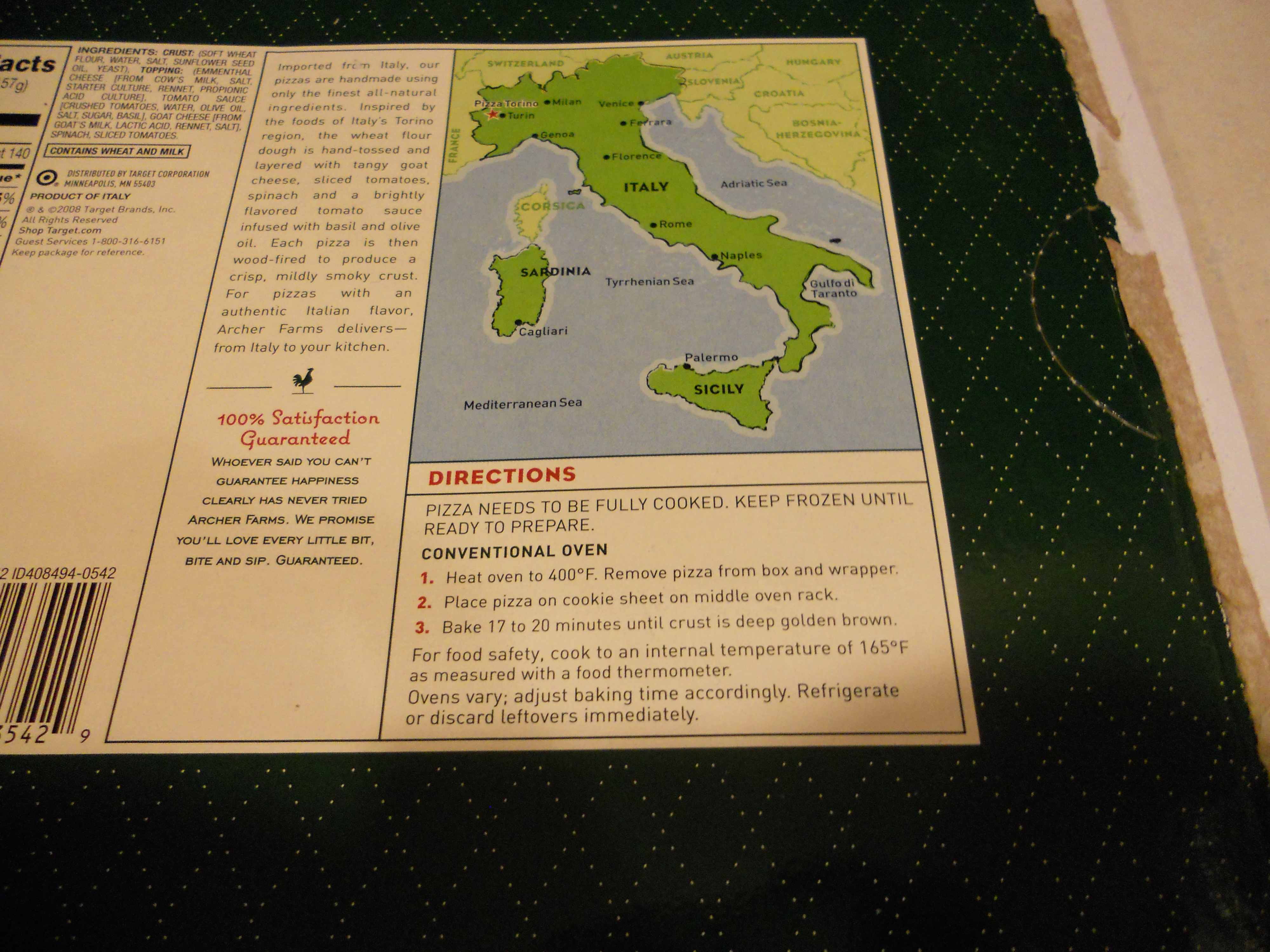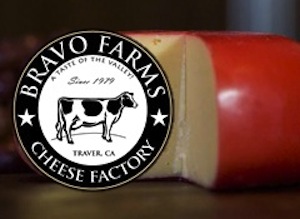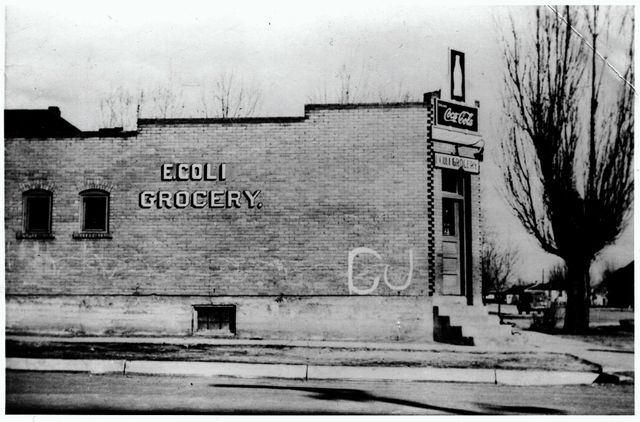In 2004, I spent a week at a cottage with a couple of my children in Eastern Ontario near Sandbanks Provincial Park on Lake Ontario. Lovely spot.
One rainy day, we toured around and ended up at a cheese shop. They produced the cheese in the factory at the back, and had a charming market outlet that  seemed to trap tourists like bees on sap.
seemed to trap tourists like bees on sap.
Upon entering the store, a sign declared, “HACCP – A food safety program; Hazard Analysis Critical Control Pont.” Cool. I asked one of the staff what it meant. She said she didn’t know. ??But beside the HACCP proclamation was a sign that read, “Public bathroom is out of order; for your convenience there is a blue Johnny on the spot behind the building.”?
No handwashing facilities or sanitizer. I watched people go to the porta potty and then come into the cheese shop and do what people do at quaint cheese shops: stick their unwashed hands into shared samples of curds (that’s one of my daughters looking disgusted in the middle, right, not because of the practice, but because I have to take pictures and be a food safety geek everywhere we go). HACCP really doesn’t mean much unless there is a culture of food safety amongst the employees and everyone involved in making a product, like cheese or deli meat.??
These public sampling stations can be cross-contamination nightmares. But the best hygiene won’t prevent food safety foul-ups when the product itself is contaminated.
Multiple sources are reporting tonight that Arizona and four other states reported cases of E. coli O157 in cheese products sold in Costco stores in October.
Twenty-five cases of Escherichia coli were confirmed by officials, 11 in Arizona lone, according to a statement issued Thursday by the Arizona Department of Health Services.
The outbreak appears to have been associated with cheese available for purchase at Costco "Cheese Road Shows," and Costco was working with state officials to remove the tainted product from its stores.
Early data from health officials suggests that Dutch-style Gouda cheese is the culprit. Costco is cooperating with the investigation: they have removed all suspect products from shelves and are notifying customers who purchased cheese from the road show.
A U.S. Food and Drug Administration press release states:]
• Bravo Farms Dutch Style Gouda cheese, (Costco item 40654) offered for sale and in cheese sampling events at Costco Wholesale Corporation (Costco) locations is preliminarily linked with an outbreak of E.coli O157:H7 infections.
• Consumers who have any of this cheese should not eat it. They should return the cheese to the place of purchase or dispose of it in a closed plastic bag and place in a sealed trash can to prevent people or animals, including wild animals, from eating it.
• Most people infected with E. coli O157:H7 develop diarrhea and abdominal cramps, but some illnesses may last longer and can be more severe. While most people recover within a week, some may develop a severe infection. Rarely, as  symptoms of diarrhea improve, a type of kidney failure called hemolytic uremic syndrome (HUS) can occur; this can happen at any age but is most common in children under 5 years old and in older adults. People with HUS should be hospitalized immediately, as their kidneys may stop working and they may be at risk for other serious health problems.
symptoms of diarrhea improve, a type of kidney failure called hemolytic uremic syndrome (HUS) can occur; this can happen at any age but is most common in children under 5 years old and in older adults. People with HUS should be hospitalized immediately, as their kidneys may stop working and they may be at risk for other serious health problems.
• As of Thursday, November 4, 2010, 25 persons infected with the outbreak strain of E. coli O157:H7have been reported from five states since mid-October. The number of ill persons identified in each state with this strain is as follows: AZ (11), CA (1), CO (8), NM (3) and NV (2). There have been 9 reported hospitalizations, 1 possible case of hemolytic uremic syndrome (HUS), and no deaths.
Costco may need to check its suppliers. Again.

.jpg) doors after making at least 8 sick with E. coli O157:H7, and a judge in Minnesota has ruled that Minnesota raw milk pusher Michael Hartmann was the source of an outbreak of E. coli O157:H7, and that that embargoed food items on the farm must be destroyed.
doors after making at least 8 sick with E. coli O157:H7, and a judge in Minnesota has ruled that Minnesota raw milk pusher Michael Hartmann was the source of an outbreak of E. coli O157:H7, and that that embargoed food items on the farm must be destroyed.
 As we all recover from the flu, our appetites are only mediocre. In the spirit of things, I cooked an Archer Farms spinach and goat cheese pizza for dinner tonight. I added olives because that’s one of the few things Sorenne currently loves. When looking at the cooking time and temp I noticed detailed directions that seem straight from this blog:
As we all recover from the flu, our appetites are only mediocre. In the spirit of things, I cooked an Archer Farms spinach and goat cheese pizza for dinner tonight. I added olives because that’s one of the few things Sorenne currently loves. When looking at the cooking time and temp I noticed detailed directions that seem straight from this blog: So I did (exactly as pictured). After cooking the pizza at 400F for about 18 minutes, I took it out and tried to eye the thickest part. Then I tried to put the thermometer in somewhat sideways being careful not to poke through the other side. To take the picture, I had to prop the thermometer on my spatula. The process made a big gash in my pizza toppings and the cheese stuck like glue on the thermometer, but it was easy to see the pizza was well above 165F.
So I did (exactly as pictured). After cooking the pizza at 400F for about 18 minutes, I took it out and tried to eye the thickest part. Then I tried to put the thermometer in somewhat sideways being careful not to poke through the other side. To take the picture, I had to prop the thermometer on my spatula. The process made a big gash in my pizza toppings and the cheese stuck like glue on the thermometer, but it was easy to see the pizza was well above 165F. manufactured from raw milk contaminated with low levels of this pathogen.”
manufactured from raw milk contaminated with low levels of this pathogen.” cutting Carrefour Selection, and discovered E. coli.
cutting Carrefour Selection, and discovered E. coli..jpg) family’s organic dairy, Rosecrest Farm, in Chehalis, Wash. State inspectors told her the Swiss cheese she had labored over for months was contaminated with listeria.
family’s organic dairy, Rosecrest Farm, in Chehalis, Wash. State inspectors told her the Swiss cheese she had labored over for months was contaminated with listeria..jpg) below; thanks Carl).
below; thanks Carl). aged for at least 60 days. The idea is acid and salt help destroy dangerous bugs.
aged for at least 60 days. The idea is acid and salt help destroy dangerous bugs. Costco Warehouses in these states. This cheese—Bravo Farms Dutch Style Gouda Cheese (Costco Item 40654) manufactured by Bravo Farms, Traver CA—was sold and offered as free samples for in-store tasting from October 5 to November 1.
Costco Warehouses in these states. This cheese—Bravo Farms Dutch Style Gouda Cheese (Costco Item 40654) manufactured by Bravo Farms, Traver CA—was sold and offered as free samples for in-store tasting from October 5 to November 1. seemed to trap tourists like bees on sap.
seemed to trap tourists like bees on sap. symptoms of diarrhea improve, a type of kidney failure called hemolytic uremic syndrome (HUS) can occur; this can happen at any age but is most common in children under 5 years old and in older adults. People with HUS should be hospitalized immediately, as their kidneys may stop working and they may be at risk for other serious health problems.
symptoms of diarrhea improve, a type of kidney failure called hemolytic uremic syndrome (HUS) can occur; this can happen at any age but is most common in children under 5 years old and in older adults. People with HUS should be hospitalized immediately, as their kidneys may stop working and they may be at risk for other serious health problems..jpg) monocytogenes. They claim that no illnesses have been reported, but we’ve all heard that one before.
monocytogenes. They claim that no illnesses have been reported, but we’ve all heard that one before..jpg) Decadent Chocolate Chunk Cookies had a very different news release. The company responsible included all the necessary information to identify and avoid the product, which is not tainted with Listeria but contains metal pieces.
Decadent Chocolate Chunk Cookies had a very different news release. The company responsible included all the necessary information to identify and avoid the product, which is not tainted with Listeria but contains metal pieces.